Leadership in Construction: A Scientometric Review
Abstract
1. Introduction
2. Methodology
3. Results
3.1. Collaboration Analysis
3.1.1. Country/Region Collaboration Network
3.1.2. Institution Collaboration Network
3.1.3. Author Collaboration Network
3.2. Co-Citation Analysis
3.2.1. Author Co-Citation Analysis
3.2.2. Reference Co-Citation Analysis
| Citation Counts | References | Author | Source Journal/Publisher |
|---|---|---|---|
| 24 | Transformational leadership and project success: The mediating role of team-building [45] | D.A. Aga | International Journal of Project Management |
| 13 | Leadership theory and research in the new millennium: Current theoretical trends and changing perspectives [46] | Jessica E.Dinh | The Leadership Quarterly |
| 13 | Leadership styles, goal clarity, and project success: Evidence from project-based organisations in Pakistan [47] | Muhammad Mustafa Raziq | Leadership & Organization Development Journal |
| 11 | Knowledge-oriented leadership and open innovation: Role of knowledgemanagement capability in France-based multinationals [48] | M. Muzamil Naqshbandi | International Business Review |
| 10 | Linking transformational leadership and work outcomes in temporary organisations: A social identity approach [49] | Xian Ding | International Journal of Project Management |
| 10 | A primer on partial least squares structural equation modelling (PLS-SEM) [50] | Joseph F. Hair | Sage publications |
| 10 | Advances in leader and leadership development: A review of 25 years of research and theory [51] | Joseph F. Hair | Engineering, Construction and Architectural Management |
| 8 | Leadership, organisational culture, and innovative behavior in construction projects: The perspective of behavior-value congruence [52] | David V.Day | The Leadership Quarterly |
| 8 | Servant Leadership: A systematic review and call for future research [53] | Nthan Eva | The Leadership Quarterly |
| 8 | A meta-analytic review of authentic and transformational leadership: A test for redundancy [54] | George C.Banks | The Leadership Quarterly |
| Cluster ID | Size | Silhouette | Mean (Year) | Top Terms (Log-Likelihood Ratio) |
|---|---|---|---|---|
| 0 | 127 | 0.995 | 2021 | Transactional leadership |
| 1 | 77 | 0.927 | 2016 | Safety leadership |
| 3 | 52 | 0.938 | 2010 | Team performance |
| 4 | 37 | 0.981 | 2011 | Leadership interaction processes |
| 5 | 31 | 0.983 | 2018 | Actual leader behaviour |
| 6 | 29 | 0.954 | 2016 | Creative leadership |
| 8 | 22 | 0.981 | 2013 | Diverse leadership theories |
| 9 | 18 | 0.983 | 2014 | Organisational neuroscience |
3.3. Co-Word Analysis
3.3.1. Co-Occurrence Analysis
3.3.2. Keywords Evolution Analysis
4. Future Research Prospects
4.1. Future Reserch Trends
4.2. Innovative Future Research Areas
5. Conclusions
Author Contributions
Funding
Data Availability Statement
Acknowledgments
Conflicts of Interest
References
- Northouse, P.G. Leadership: Theory and Practice; Sage Publications: Thousand Oaks, CA, USA, 2021; ISBN 1071834479. [Google Scholar]
- Pries, F.; Doree, A.; Van Der Veen, B.; Vrijhoef, R. The Role of Leaders’ Paradigm in Construction Industry Change. Constr. Manag. Econ. 2004, 22, 7–10. [Google Scholar] [CrossRef]
- Skipper, C.O.; Bell, L.C. Influences Impacting Leadership Development. J. Manag. Eng. 2006, 22, 68–74. [Google Scholar] [CrossRef]
- Sui Pheng, L.; Lee, B.S.K. East Meets West: Leadership Development for Construction Project Management. J. Manag. Psychol. 1997, 12, 383–400. [Google Scholar] [CrossRef]
- Weingardt, R.G. Leadership: The World Is Run by Those Who Show Up. J. Manag. Eng. 1997, 13, 61–66. [Google Scholar] [CrossRef]
- Spatz, D.M. Leadership in the Construction Industry. Pract. Period. Struct. Des. Constr. 1999, 4, 64–68. [Google Scholar] [CrossRef]
- Holt, R.; Rowe, D. Total Quality, Public Management and Critical Leadership in Civil Construction Projects. Int. J. Qual. Reliab. Manag. 2000, 17, 541–553. [Google Scholar] [CrossRef]
- Odusami, K.T.; Iyagba, R.R.O.; Omirin, M.M. The Relationship between Project Leadership, Team Composition and Construction Project Performance in Nigeria. Int. J. Proj. Manag. 2003, 21, 519–527. [Google Scholar] [CrossRef]
- Bergeron, H.E. A Perspective on the Need to Give an Introduction to Engineering Management to All Engineering Students. Leadersh. Manag. Eng. 2001, 1, 26–29. [Google Scholar] [CrossRef]
- Ammeter, A.P.; Dukerich, J.M. Leadership, Team Building, and Team Member Characteristics in High Performance Project Teams. EMJ-Eng. Manag. J. 2002, 14, 3–10. [Google Scholar] [CrossRef]
- Liu, A.; Fellows, R.; Fang, Z. The Power Paradigm of Project Leadership. Constr. Manag. Econ. 2003, 21, 819–829. [Google Scholar] [CrossRef]
- Fellows, R.; Liu, A.; Fong, C.M. Leadership Style and Power Relations in Quantity Surveying in Hong Kong. Constr. Manag. Econ. 2003, 21, 809–818. [Google Scholar] [CrossRef]
- Bossink, B.A. Effectiveness of Innovation Leadership Styles: A Manager’s Influence on Ecological Innovation in Construction Projects. Constr. Innov. 2004, 4, 211–228. [Google Scholar] [CrossRef]
- Keegan, A.E.; Den Hartog, D.N. Transformational Leadership in a Project-Based Environment: A Comparative Study of the Leadership Styles of Project Managers and Line Managers. Int. J. Proj. Manag. 2004, 22, 609–617. [Google Scholar] [CrossRef]
- Giritli, H.; Oraz, G.T. Leadership Styles: Some Evidence from the Turkish Construction Industry. Constr. Manag. Econ. 2004, 22, 253–262. [Google Scholar] [CrossRef]
- Chan, A.T.S.; Chan, E.H.W. Impact of Perceived Leadership Styles on Work Outcomes: Case of Building Professionals. J. Constr. Eng. Manag. 2005, 131, 413–422. [Google Scholar] [CrossRef]
- Turner, J.R.; Müller, R. The Project Manager’s Leadership Style as a Success Factor on Projects: A Literature Review. Proj. Manag. J. 2005, 36, 49–61. [Google Scholar] [CrossRef]
- Müller, R.; Turner, R. The Influence of Project Managers on Project Success Criteria and Project Success by Type of Project. Eur. Manag. J. 2007, 25, 298–309. [Google Scholar] [CrossRef]
- Nixon, P.; Harrington, M.; Parker, D. Leadership Performance Is Significant to Project Success or Failure: A Critical Analysis. Int. J. Product. Perform. Manag. 2012, 61, 204–216. [Google Scholar] [CrossRef]
- Larsson, J.; Eriksson, P.E.; Olofsson, T.; Simonsson, P. Leadership in Civil Engineering: Effects of Project Managers’ Leadership Styles on Project Performance. J. Manag. Eng. 2015, 31, 04015011. [Google Scholar] [CrossRef]
- Potter, E.M.; Egbelakin, T.; Phipps, R.; Balaei, B. Emotional Intelligence and Transformational Leadership Behaviours of Construction Project Managers. J. Financ. Manag. Prop. Constr. 2018, 23, 73–89. [Google Scholar] [CrossRef]
- Toor, S.-U.-R.; Ofori, G. Taking Leadership Research into Future: A Review of Empirical Studies and New Directions for Research. Eng. Constr. Archit. Manag. 2008, 15, 352–371. [Google Scholar] [CrossRef]
- Simmons, D.R.; Clegorne, N.A.; Woods-Wells, T. Leadership Paradigms in Construction: Critical Review to Inform Research and Practice. J. Manag. Eng. 2017, 33, 02517001. [Google Scholar] [CrossRef]
- Graham, P.; Nikolova, N.; Sankaran, S. Tension between Leadership Archetypes: Systematic Review to Inform Construction Research and Practice. J. Manag. Eng. 2020, 36, 3119002. [Google Scholar] [CrossRef]
- Carroll, B.; Levy, L.; Richmond, D. Leadership as Practice: Challenging the Competency Paradigm. Leadership 2008, 4, 363–379. [Google Scholar] [CrossRef]
- Saini, D.; Sengupta, S.S. Responsibility, Ethics, and Leadership: An Indian Study. Asian J. Bus. Ethics 2016, 5, 97–109. [Google Scholar] [CrossRef]
- Ahmed, R.; Philbin, S.P.; Cheema, F.E. Systematic Literature Review of Project Manager’s Leadership Competencies. Eng. Constr. Archit. Manag. 2021, 28, 1–30. [Google Scholar] [CrossRef]
- Nalimov, V.V.; Mulʹchenko, Z.M. Measurement of Science. Study of the Development of Science as an Information Process; U.S. Air Force Systems Command, Foreign Technology Division: Virginia, CA, USA, 1971. [Google Scholar]
- Chen, C.; Dubin, R.; Kim, M.C. Orphan Drugs and Rare Diseases: A Scientometric Review (2000–2014). Expert Opin. Orphan Drugs 2014, 2, 709–724. [Google Scholar] [CrossRef]
- Chen, C.; Hu, Z.; Liu, S.; Tseng, H. Emerging Trends in Regenerative Medicine: A Scientometric Analysis in CiteSpace. Expert Opin. Biol. Ther. 2012, 12, 593–608. [Google Scholar] [CrossRef]
- van Eck, N.J.; Waltman, L. Software Survey: VOSviewer, a Computer Program for Bibliometric Mapping. Scientometrics 2010, 84, 523–538. [Google Scholar] [CrossRef]
- Garfield, E. From the Science of Science to Scientometrics Visualizing the History of Science with HistCite Software. J. Informetr. 2009, 3, 173–179. [Google Scholar] [CrossRef]
- Chen, C.; Ibekwe-SanJuan, F.; Hou, J. The Structure and Dynamics of Cocitation Clusters: A Multiple-perspective Cocitation Analysis. J. Am. Soc. Inf. Sci. Technol. 2010, 61, 1386–1409. [Google Scholar] [CrossRef]
- Delbari, S.A.; Ng, S.I.; Aziz, Y.A.; Ho, J.A. Measuring the Influence and Impact of Competitiveness Research: A Web of Science Approach. Scientometrics 2015, 105, 773–788. [Google Scholar] [CrossRef]
- Chen, C.; Song, M. Visualizing a Field of Research: A Methodology of Systematic Scientometric Reviews. PLoS ONE 2019, 14, e0223994. [Google Scholar] [CrossRef] [PubMed]
- Mingers, J.; Leydesdorff, L. A Review of Theory and Practice in Scientometrics. Eur. J. Oper. Res. 2015, 246, 1–19. [Google Scholar] [CrossRef]
- Xue, J.; Shen, G.Q.; Yang, R.J.; Wu, H.; Li, X.; Lin, X.; Xue, F. Mapping the Knowledge Domain of Stakeholder Perspective Studies in Construction Projects: A Bibliometric Approach. Int. J. Proj. Manag. 2020, 38, 313–326. [Google Scholar] [CrossRef]
- Chen, C. CiteSpace II: Detecting and Visualizing Emerging Trends and Transient Patterns in Scientific Literature. J. Am. Soc. Inf. Sci. Technol. 2006, 57, 359–377. [Google Scholar] [CrossRef]
- Small, H. Co-citation in the Scientific Literature: A New Measure of the Relationship between Two Documents. J. Am. Soc. Inf. Sci. 1973, 24, 265–269. [Google Scholar] [CrossRef]
- Avolio, J.; Bass, M. Multifactor Leadership Questionnaire: Manual and Sample Set; Mind Garden: Menlo Park, CA, USA, 2012. [Google Scholar]
- Bass, B.M.; Avolio, B.J. Improving Organizational Effectiveness through Transformational Leadership; Sage Publications: Thousand Oaks, CA, USA, 1994; ISBN 0803952368. [Google Scholar]
- Avolio, B.J.; Bass, B.M.; Jung, D.I. Re-examining the Components of Transformational and Transactional Leadership Using the Multifactor Leadership. J. Occup. Organ. Psychol. 1999, 72, 441–462. [Google Scholar] [CrossRef]
- Bass, B.M.; Avolio, B.J.; Jung, D.I.; Berson, Y. Predicting Unit Performance by Assessing Transformational and Transactional Leadership. J. Appl. Psychol. 2003, 88, 207. [Google Scholar] [CrossRef]
- Chen, C.; Dubin, R.; Kim, M.C. Emerging Trends and New Developments in Regenerative Medicine: A Scientometric Update (2000-2014). Expert Opin. Biol. Ther. 2014, 14, 1295–1317. [Google Scholar] [CrossRef]
- Aga, D.A.; Noorderhaven, N.; Vallejo, B. Transformational Leadership and Project Success: The Mediating Role of Team-Building. Int. J. Proj. Manag. 2016, 34, 806–818. [Google Scholar] [CrossRef]
- Dinh, J.E.; Lord, R.G.; Gardner, W.L.; Meuser, J.D.; Liden, R.C.; Hu, J. Leadership Theory and Research in the New Millennium: Current Theoretical Trends and Changing Perspectives. Leadersh. Q. 2014, 25, 36–62. [Google Scholar] [CrossRef]
- Raziq, M.M.; Borini, F.M.; Malik, O.F.; Ahmad, M.; Shabaz, M. Leadership Styles, Goal Clarity, and Project Success: Evidence from Project-Based Organizations in Pakistan. Leadersh. Organ. Dev. J. 2018, 39, 309–323. [Google Scholar] [CrossRef]
- Naqshbandi, M.M.; Jasimuddin, S.M. Knowledge-Oriented Leadership and Open Innovation: Role of Knowledge Management Capability in France-Based Multinationals. Int. Bus. Rev. 2018, 27, 701–713. [Google Scholar] [CrossRef]
- Ding, X.; Li, Q.; Zhang, H.; Sheng, Z.; Wang, Z. Linking Transformational Leadership and Work Outcomes in Temporary Organizations: A Social Identity Approach. Int. J. Proj. Manag. 2017, 35, 543–556. [Google Scholar] [CrossRef]
- Hair, J.F., Jr.; Hult, G.T.M.; Ringle, C.M.; Sarstedt, M. A Primer on Partial Least Squares Structural Equation Modeling (PLS-SEM); Sage Publications: Thousand Oaks, CA, USA, 2021; ISBN 1544396333. [Google Scholar]
- Day, D.V.; Fleenor, J.W.; Atwater, L.E.; Sturm, R.E.; McKee, R.A. Advances in Leader and Leadership Development: A Review of 25 Years of Research and Theory. Leadersh. Q. 2014, 25, 63–82. [Google Scholar] [CrossRef]
- Zheng, J.W.; Wu, G.D.; Xie, H.T.; Li, H.Y. Leadership, Organizational Culture, and Innovative Behavior in Construction Projects: The Perspective of Behavior-Value Congruence. Int. J. Manag. Proj. Bus. 2019, 12, 888–918. [Google Scholar] [CrossRef]
- Eva, N.; Robin, M.; Sendjaya, S.; Van Dierendonck, D.; Liden, R.C. Servant Leadership: A Systematic Review and Call for Future Research. Leadersh. Q. 2019, 30, 111–132. [Google Scholar] [CrossRef]
- Banks, G.C.; McCauley, K.D.; Gardner, W.L.; Guler, C.E. A Meta-Analytic Review of Authentic and Transformational Leadership: A Test for Redundancy. Leadersh. Q. 2016, 27, 634–652. [Google Scholar] [CrossRef]
- Prabhakar, G.P. What Is Project Success: A Literature Review. Int. J. Bus. Manag. 2008, 3, 3–10. [Google Scholar] [CrossRef]
- Zhang, L.; Cao, T.; Wang, Y. The Mediation Role of Leadership Styles in Integrated Project Collaboration: An Emotional Intelligence Perspective. Int. J. Proj. Manag. 2018, 36, 317–330. [Google Scholar] [CrossRef]
- Tabassi, A.A.; Roufechaei, K.M.; Ramli, M.; Bakar, A.H.A.; Ismail, R.; Pakir, A.H.K. Leadership Competences of Sustainable Construction Project Managers. J. Clean. Prod. 2016, 124, 339–349. [Google Scholar] [CrossRef]
- Maqbool, R.; Sudong, Y.; Manzoor, N.; Rashid, Y. The Impact of Emotional Intelligence, Project Managers’ Competencies, and Transformational Leadership on Project Success: An Empirical Perspective. Proj. Manag. J. 2017, 48, 58–75. [Google Scholar] [CrossRef]
- Wu, G.; Liu, C.; Zhao, X.; Zuo, J. Investigating the Relationship between Communication-Conflict Interaction and Project Success among Construction Project Teams. Int. J. Proj. Manag. 2017, 35, 1466–1482. [Google Scholar] [CrossRef]
- Zuo, J.; Zhao, X.; Nguyen, Q.B.M.; Ma, T.; Gao, S. Soft Skills of Construction Project Management Professionals and Project Success Factors: A Structural Equation Model. Eng. Constr. Archit. Manag. 2018, 25, 425–442. [Google Scholar] [CrossRef]
- Nisar, Q.A.; Basheer, M.F.; Hussain, M.S.; Waqas, A. The Role of Leaders’ Emotional Sincerity towards Followers’ Trust: Leaders’ Integrity & Quality Relationship. J. Contemp. Issues Bus. Gov. 2021, 27, 472–479. [Google Scholar]
- Hofmann, D.A.; Burke, M.J.; Zohar, D. 100 Years of Occupational Safety Research: From Basic Protections and Work Analysis to a Multilevel View of Workplace Safety and Risk. J. Appl. Psychol. 2017, 102, 375. [Google Scholar] [CrossRef] [PubMed]
- Hoffmeister, K.; Gibbons, A.M.; Johnson, S.K.; Cigularov, K.P.; Chen, P.Y.; Rosecrance, J.C. The Differential Effects of Transformational Leadership Facets on Employee Safety. Saf. Sci. 2014, 62, 68–78. [Google Scholar] [CrossRef]
- Mullen, J.; Kelloway, E.K.; Teed, M. Employer Safety Obligations, Transformational Leadership and Their Interactive Effects on Employee Safety Performance. Saf. Sci. 2017, 91, 405–412. [Google Scholar] [CrossRef]
- Wu, C.; Fang, D.; Li, N. Roles of Owners’ Leadership in Construction Safety: The Case of High-Speed Railway Construction Projects in China. Int. J. Proj. Manag. 2015, 33, 1665–1679. [Google Scholar] [CrossRef]
- Fang, D.P.; Wu, C.L.; Wu, H.J. Impact of the Supervisor on Worker Safety Behavior in Construction Projects. J. Manag. Eng. 2015, 31, 04015001. [Google Scholar] [CrossRef]
- Newaz, M.T.; Davis, P.; Jefferies, M.; Pillay, M. The Psychological Contract: A Missing Link between Safety Climate and Safety Behaviour on Construction Sites. Saf. Sci. 2019, 112, 9–17. [Google Scholar] [CrossRef]
- Chen, Y.; McCabe, B.; Hyatt, D. Impact of Individual Resilience and Safety Climate on Safety Performance and Psychological Stress of Construction Workers: A Case Study of the Ontario Construction Industry. J. Saf. Res. 2017, 61, 167–176. [Google Scholar] [CrossRef] [PubMed]
- Wu, C.; Wang, F.; Zou, P.X.W.; Fang, D. How Safety Leadership Works among Owners, Contractors and Subcontractors in Construction Projects. Int. J. Proj. Manag. 2016, 34, 789–805. [Google Scholar] [CrossRef]
- Guo, B.H.W.; Yiu, T.W.; González, V.A. Predicting Safety Behavior in the Construction Industry: Development and Test of an Integrative Model. Saf. Sci. 2016, 84, 1–11. [Google Scholar] [CrossRef]
- Schmid, B.; Adams, J. Motivation in Project Management: The Project Manager’s Perspective. Proj. Manag. J. 2008, 39, 60–71. [Google Scholar] [CrossRef]
- Chiocchio, F.; Hobbs, B. The Difficult but Necessary Task of Developing a Specific Project Team Research Agenda. Proj. Manag. J. 2014, 45, 7–16. [Google Scholar] [CrossRef]
- Kragt, D.; Day, D.V. Predicting Leadership Competency Development and Promotion Among High-Potential Executives: The Role of Leader Identity. Front. Psychol. 2020, 11, 1816. [Google Scholar] [CrossRef]
- Skipper, C.O.; Bell, L.C. Assessment with 360° Evaluations of Leadership Behavior in Construction Project Managers. J. Manag. Eng. 2006, 22, 75–80. [Google Scholar] [CrossRef]
- Müller, R.; Turner, J.R. Matching the Project Manager’s Leadership Style to Project Type. Int. J. Proj. Manag. 2007, 25, 21–32. [Google Scholar] [CrossRef]
- Gehring, D.R. Applying Traits Theory of Leadership to Project Management. Proj. Manag. J. 2007, 38, 44–54. [Google Scholar] [CrossRef]
- Crevani, L.; Lindgren, M.; Packendorff, J. Leadership, Not Leaders: On the Study of Leadership as Practices and Interactions. Scand. J. Manag. 2010, 26, 77–86. [Google Scholar] [CrossRef]
- Lindgren, M.; Packendorff, J.; Tham, H. Relational Dysfunctionality: Leadership Interactions in a Sarbanes-Oxley Act Implementation Project. Eur. J. Int. Manag. 2011, 5, 13–29. [Google Scholar] [CrossRef]
- Lindgren, M.; Packendorff, J. Project Leadership Revisited: Towards Distributed Leadership Perspectives in Project Research. Int. J. Proj. Organ. Manag. 2009, 1, 285–308. [Google Scholar] [CrossRef]
- Larsson, M. Leadership in Interaction. In The Routledge Companion to Leadership; Routledge: London, UK, 2016; pp. 195–216. ISBN 1315739852. [Google Scholar]
- Mendes, F.; Stander, M.W. Positive Organisation: The Role of Leader Behaviour in Work Engagement and Retention. SA J. Ind. Psychol. 2011, 37, 1–13. [Google Scholar] [CrossRef][Green Version]
- Naoum, S.G.; Herrero, C.; Egbu, C.; Fong, D. Integrated Model for the Stressors, Stress, Stress-Coping Behaviour of Construction Project Managers in the UK. Int. J. Manag. Proj. Bus. 2018, 11, 761–782. [Google Scholar] [CrossRef]
- Wang, N.; Jiang, D.; Pretorius, L. Conflict-Resolving Behaviour of Project Managers in International Projects: A Culture-Based Comparative Study. Technol. Soc. 2016, 47, 140–147. [Google Scholar] [CrossRef]
- Owusu-Manu, D.-G.; Debrah, C.; Amissah, L.; Edwards, D.J.; Chileshe, N. Exploring the Linkages between Project Managers’ Mindset Behaviour and Project Leadership Style in the Ghanaian Construction Industry. Eng. Constr. Archit. Manag. 2020, 28, 2690–2711. [Google Scholar] [CrossRef]
- Zeng, N.; Liu, Y.; Gong, P.; Hertogh, M.; König, M. Do Right PLS and Do PLS Right: A Critical Review of the Application of PLS-SEM in Construction Management Research. Front. Eng. Manag. 2021, 8, 356–369. [Google Scholar] [CrossRef]
- Vogel, B.; Reichard, R.J.; Batistič, S.; Černe, M. A Bibliometric Review of the Leadership Development Field: How We Got Here, Where We Are, and Where We Are Headed. Leadersh. Q. 2021, 32, 101381. [Google Scholar] [CrossRef]
- Rafique, M.; Ahmed, S.; Ismail, M. Impact of Safety Climate on Safety Behaviour in Construction Projects: Mediating Mechanism and Interacting Effect. J. Constr. Dev. Ctries. 2021, 26, 163–181. [Google Scholar] [CrossRef]
- Novieto, D.T. Safety Climate and Occupational Safety Behaviours: The Mediating Role of Psychological Ownership among Construction Professionals. Eng. Constr. Archit. Manag. 2021. ahead-of-print. [Google Scholar] [CrossRef]
- He, C.Q.; Jia, G.S.; McCabe, B.; Sun, J.D. Relationship between Leader-Member Exchange and Construction Worker Safety Behavior: The Mediating Role of Communication Competence. Int. J. Occup. Saf. Ergon. 2021, 27, 371–383. [Google Scholar] [CrossRef] [PubMed]
- Tokede, O.; Ahiaga-Dagbui, D.; Morrison, J. Praxis of Knowledge-Management and Trust-Based Collaborative Relationships in Project Delivery: Mediating Role of a Project Facilitator. Int. J. Manag. Proj. Bus. 2022, 15, 595–618. [Google Scholar] [CrossRef]
- Haider, S.A.; Zubair, M.; Tehseen, S.; Iqbal, S.; Sohail, M. How Does Ambidextrous Leadership Promote Innovation in Project-Based Construction Companies? Through Mediating Role of Knowledge-Sharing and Moderating Role of Innovativeness. Eur. J. Innov. Management 2021. ahead-of-print. [Google Scholar] [CrossRef]
- Zhang, Y.; Zheng, J.; Darko, A. How Does Transformational Leadership Promote Innovation in Construction? The Mediating Role of Innovation Climate and the Multilevel Moderation Role of Project Requirements. Sustainability 2018, 10, 1506. [Google Scholar] [CrossRef]
- Ali, M.; Zhang, L.; Shah, S.J.; Khan, S.; Shah, A.M. Impact of Humble Leadership on Project Success: The Mediating Role of Psychological Empowerment and Innovative Work Behavior. Leadersh. Organ. Dev. J. 2020, 41, 349–367. [Google Scholar] [CrossRef]
- Uzunsaf Yamak, Ö.; Zihni Eyüpoğlu, Ş. Leadership Styles of Hotel Managers in Northern Cyprus: Which Style Is Dominant? Int. J. Organ. Leadersh. 2018, 7, 1–11. [Google Scholar] [CrossRef]
- Chamtitigul, N.; Li, W. The Influence of Ethical Leadership and Team Learning on Team Performance in Software Development Projects. Team Perform. Manag. Int. J. 2021, 27, 240–259. [Google Scholar] [CrossRef]
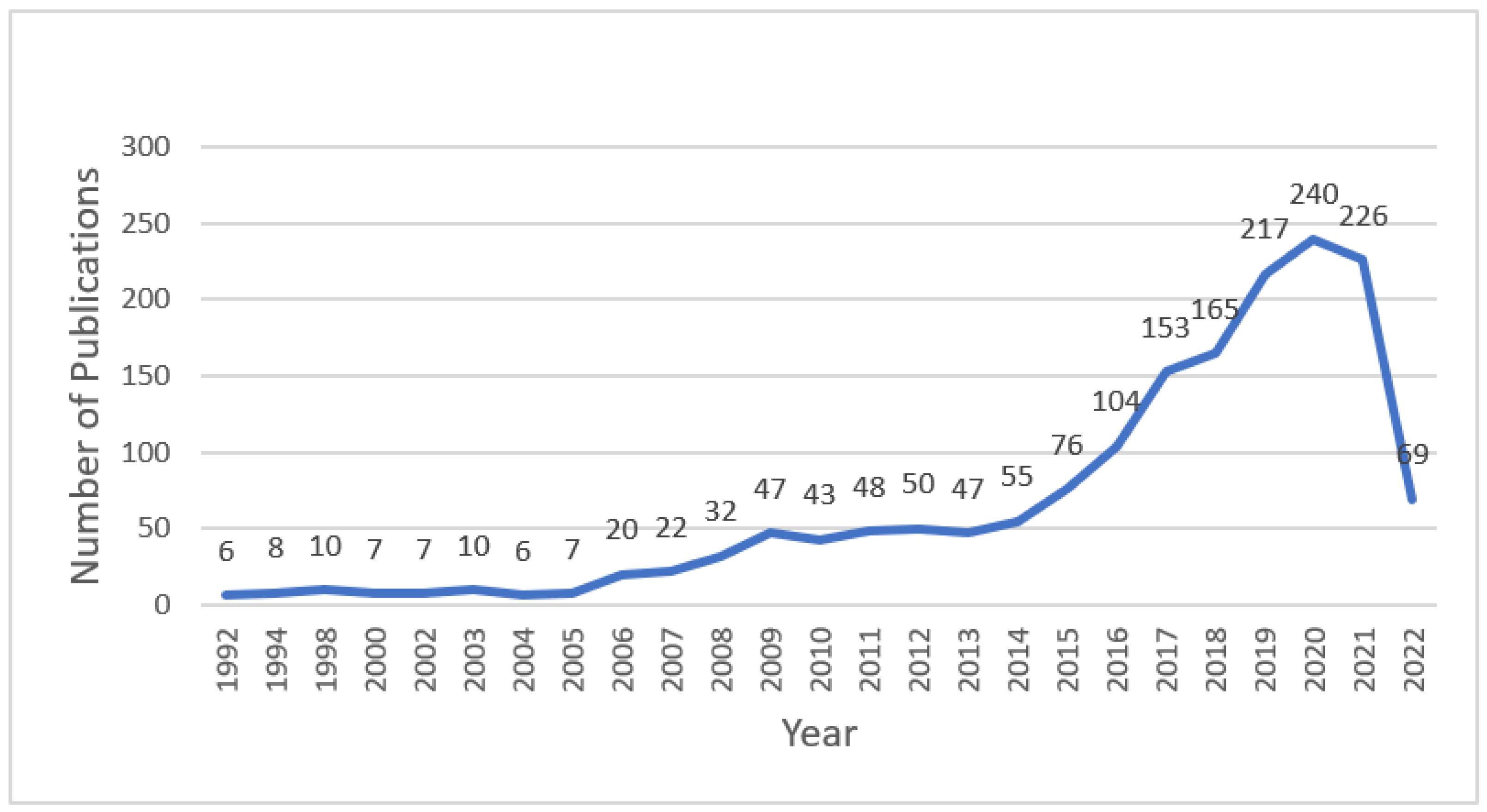
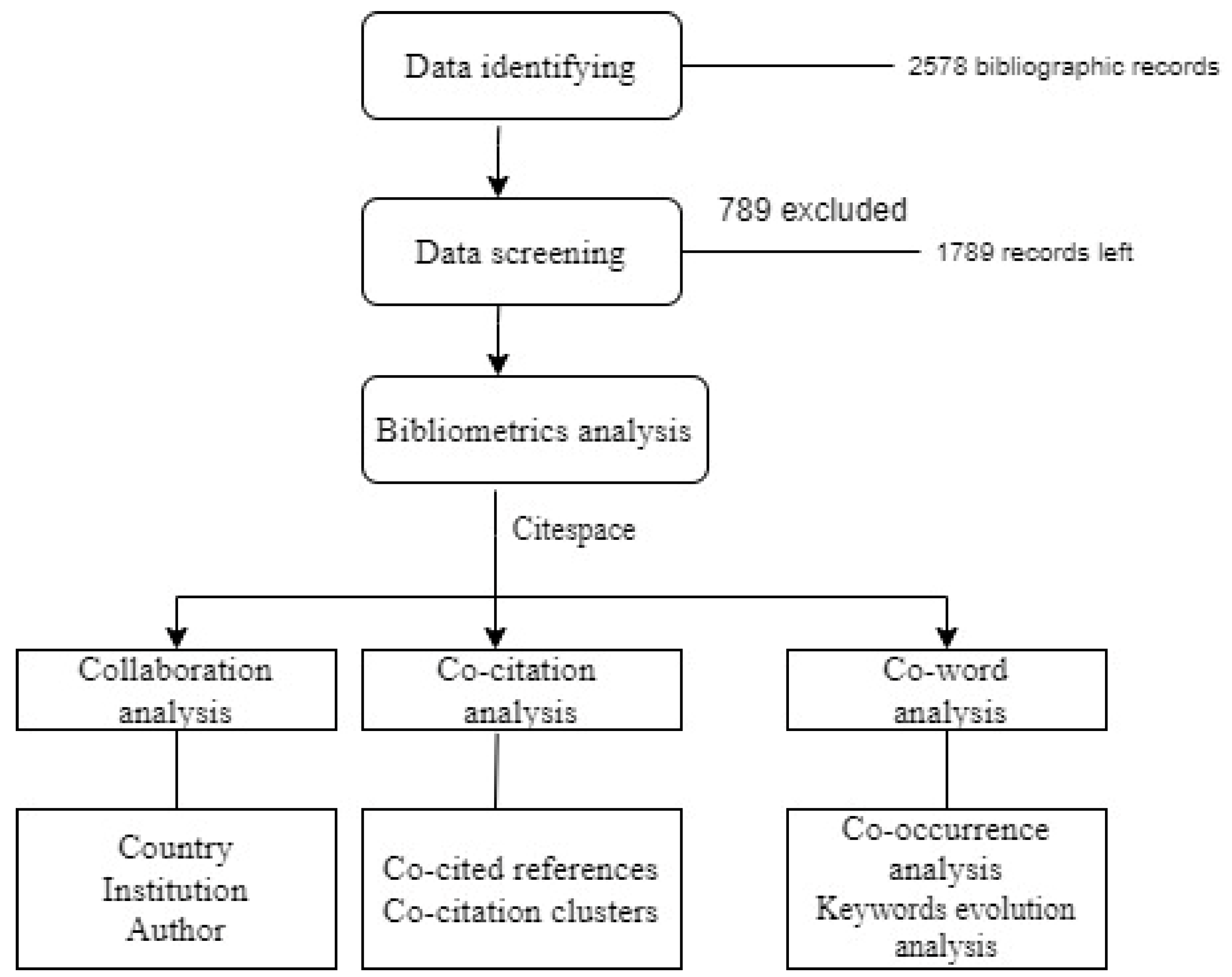
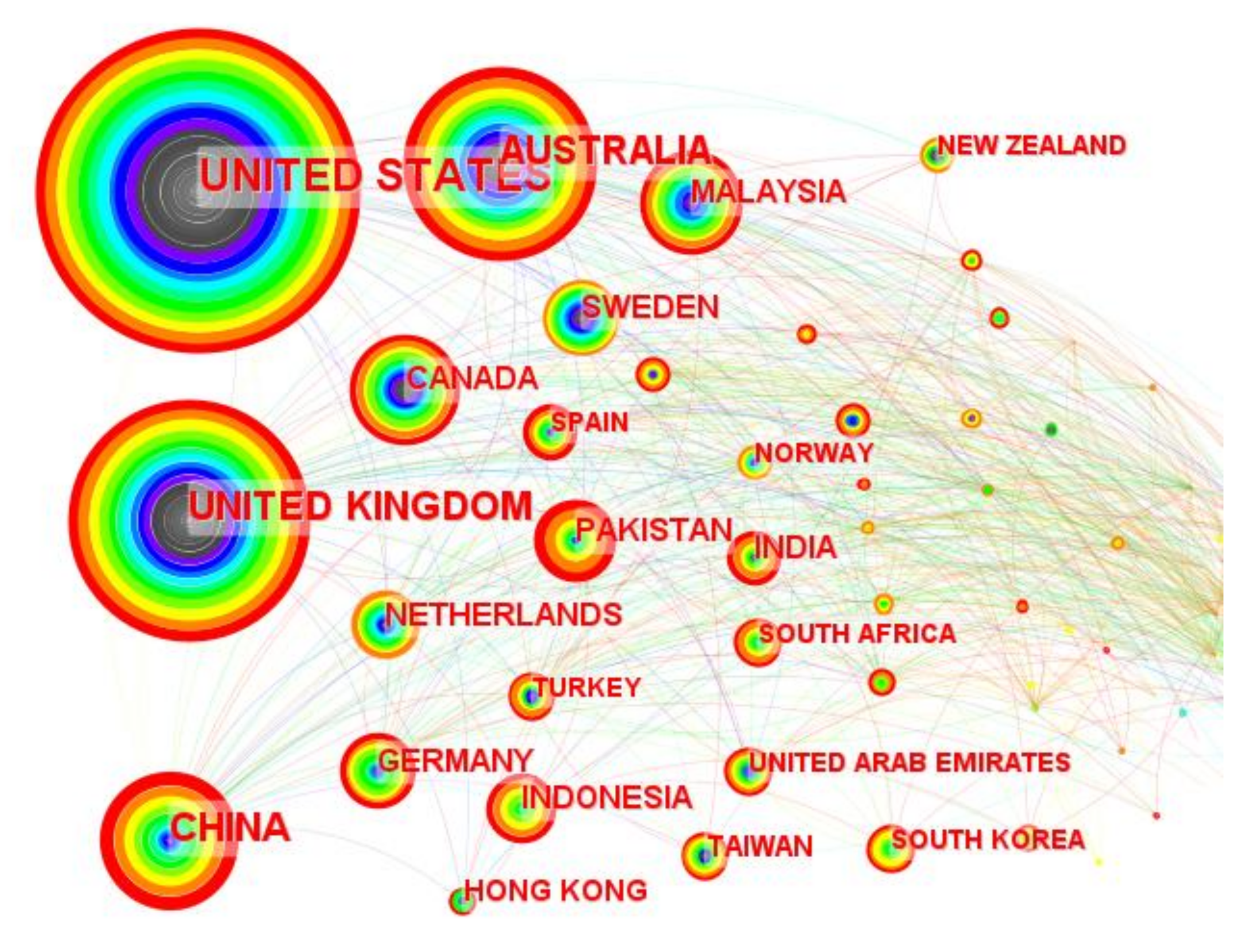
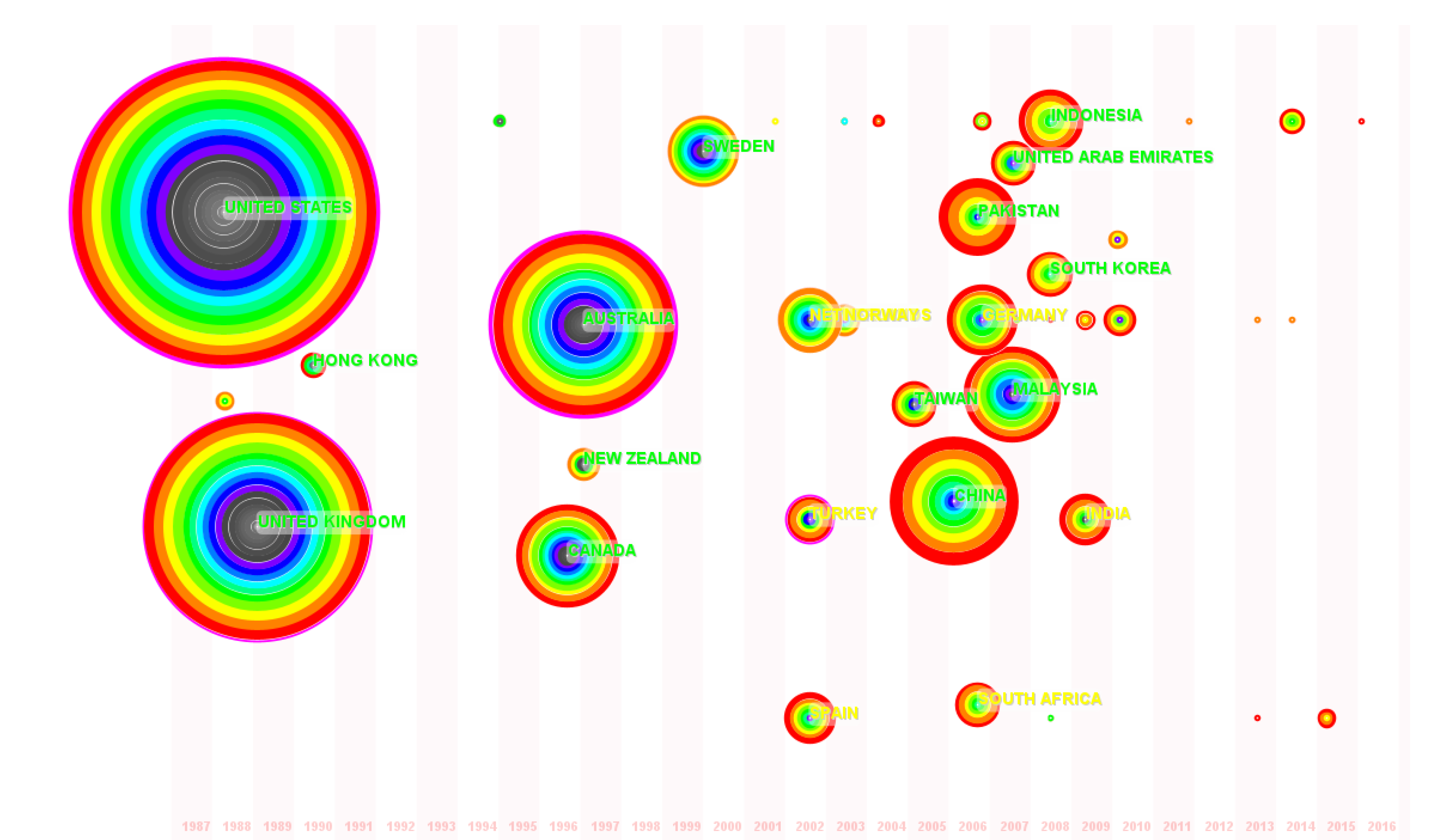
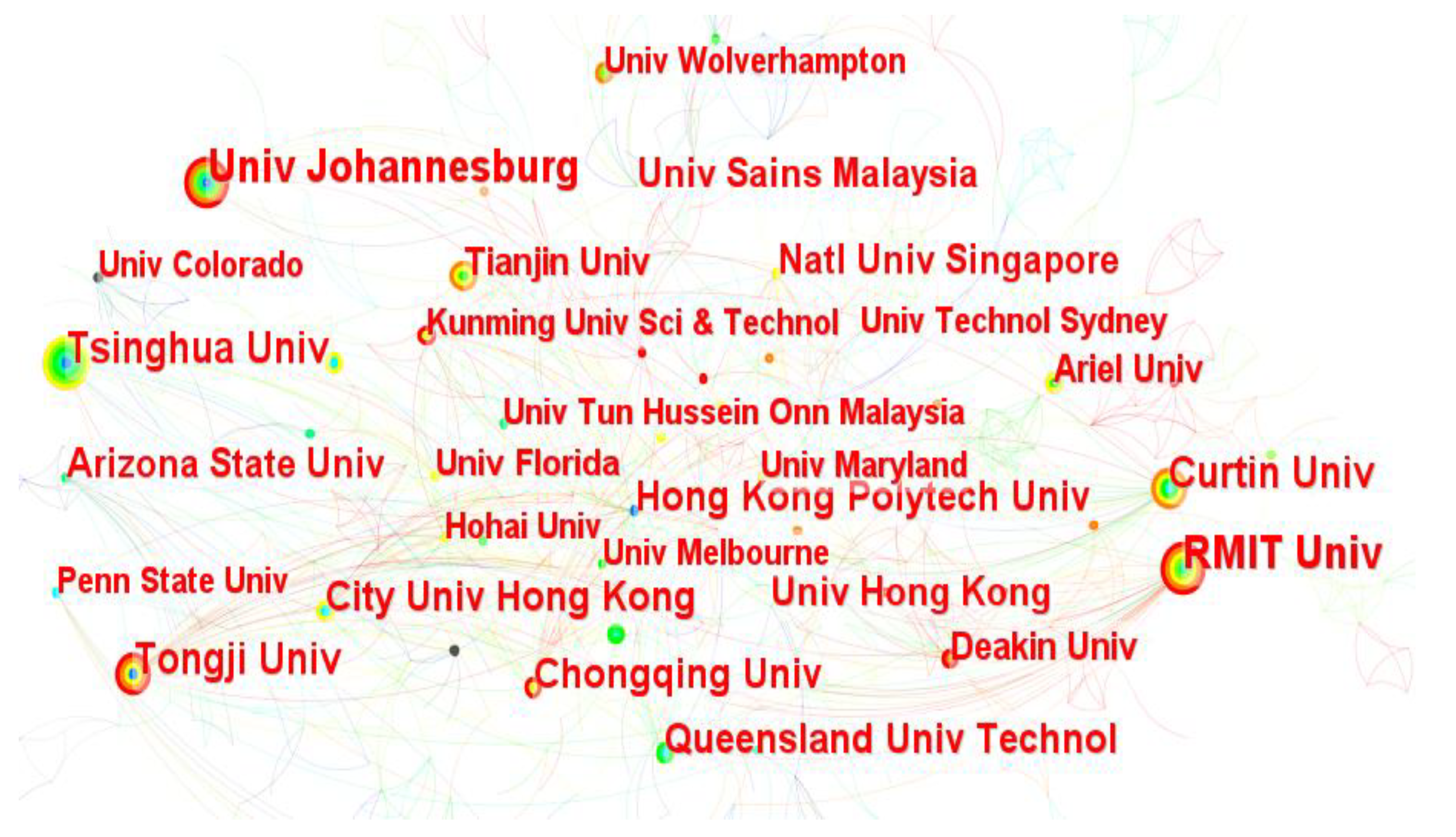

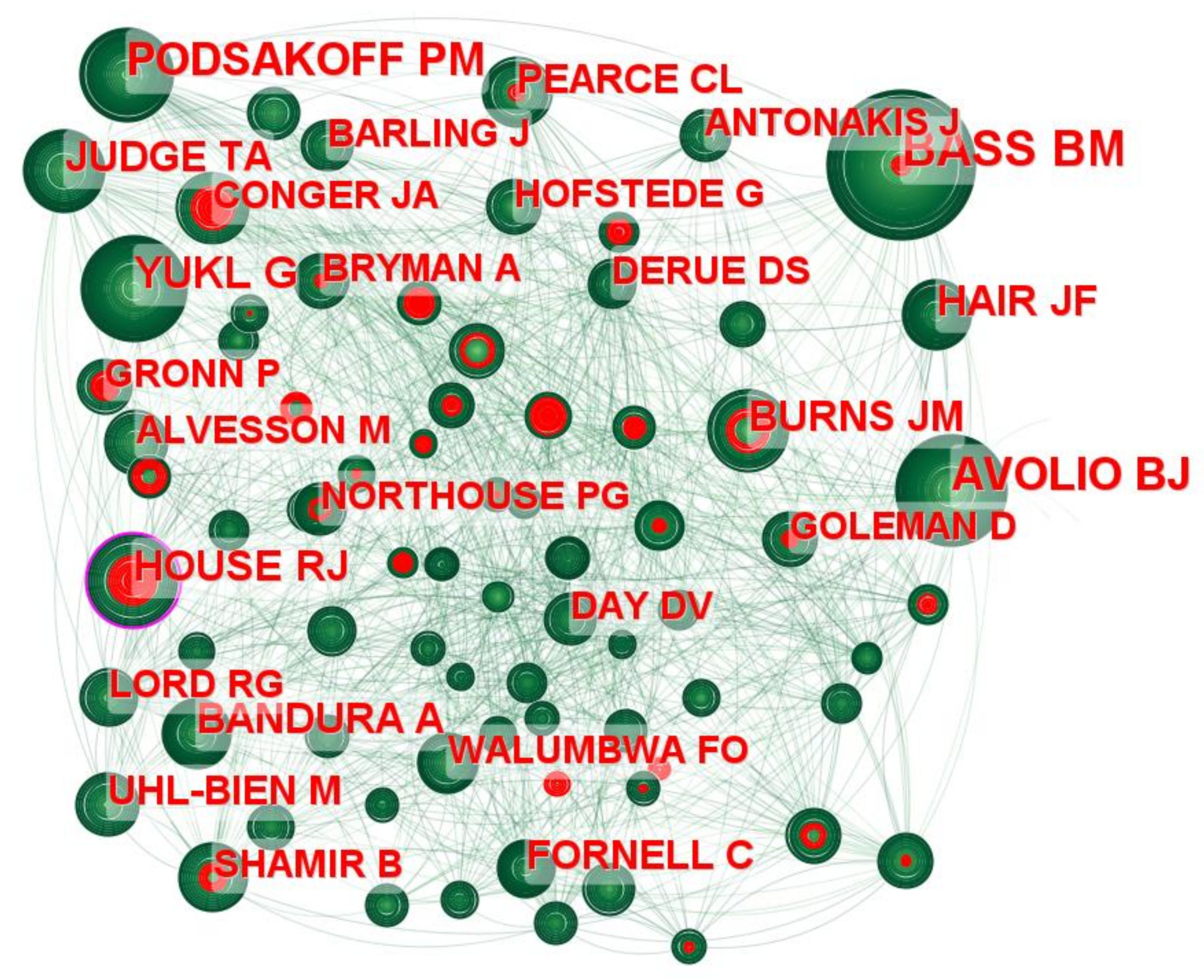
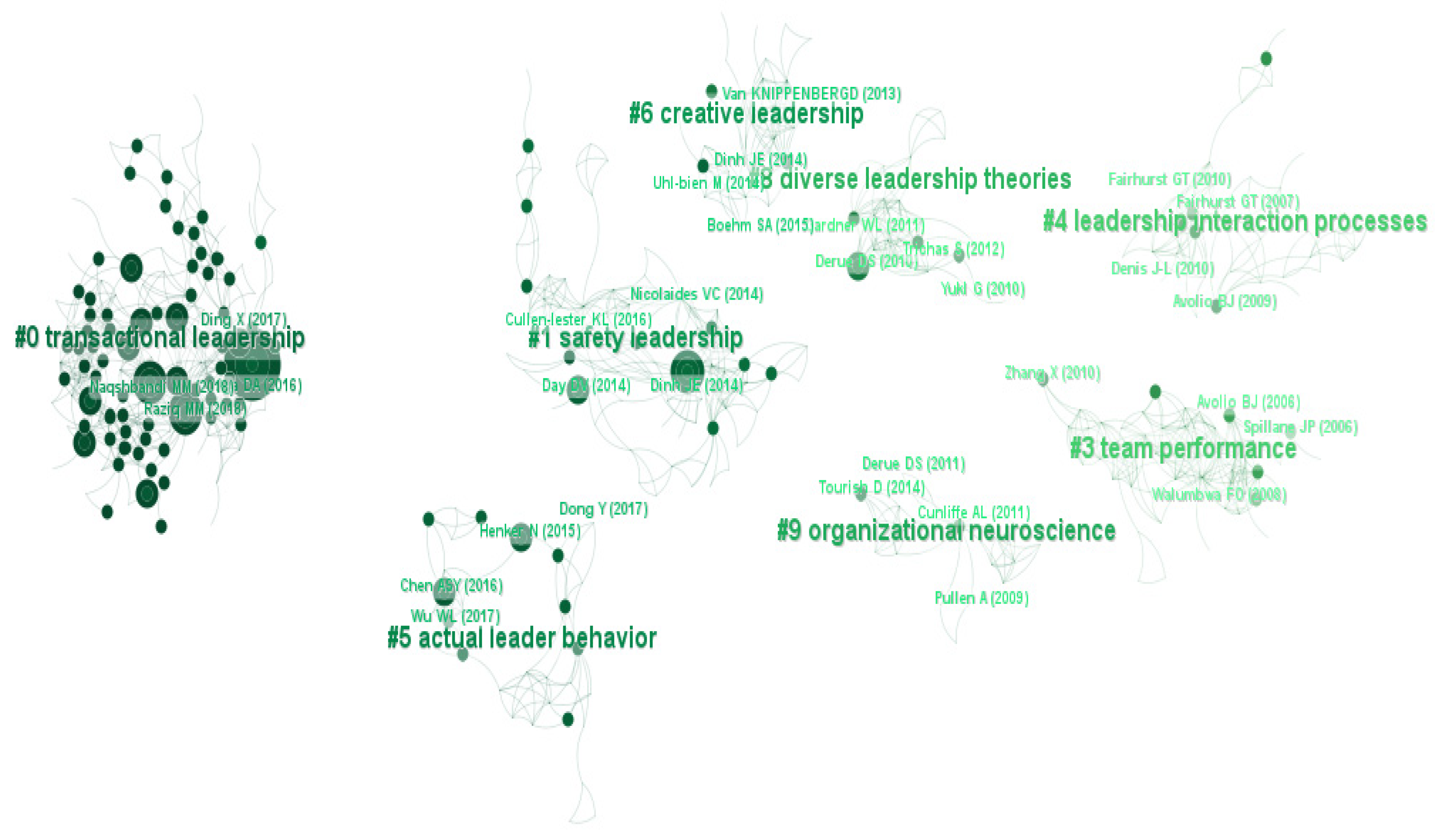

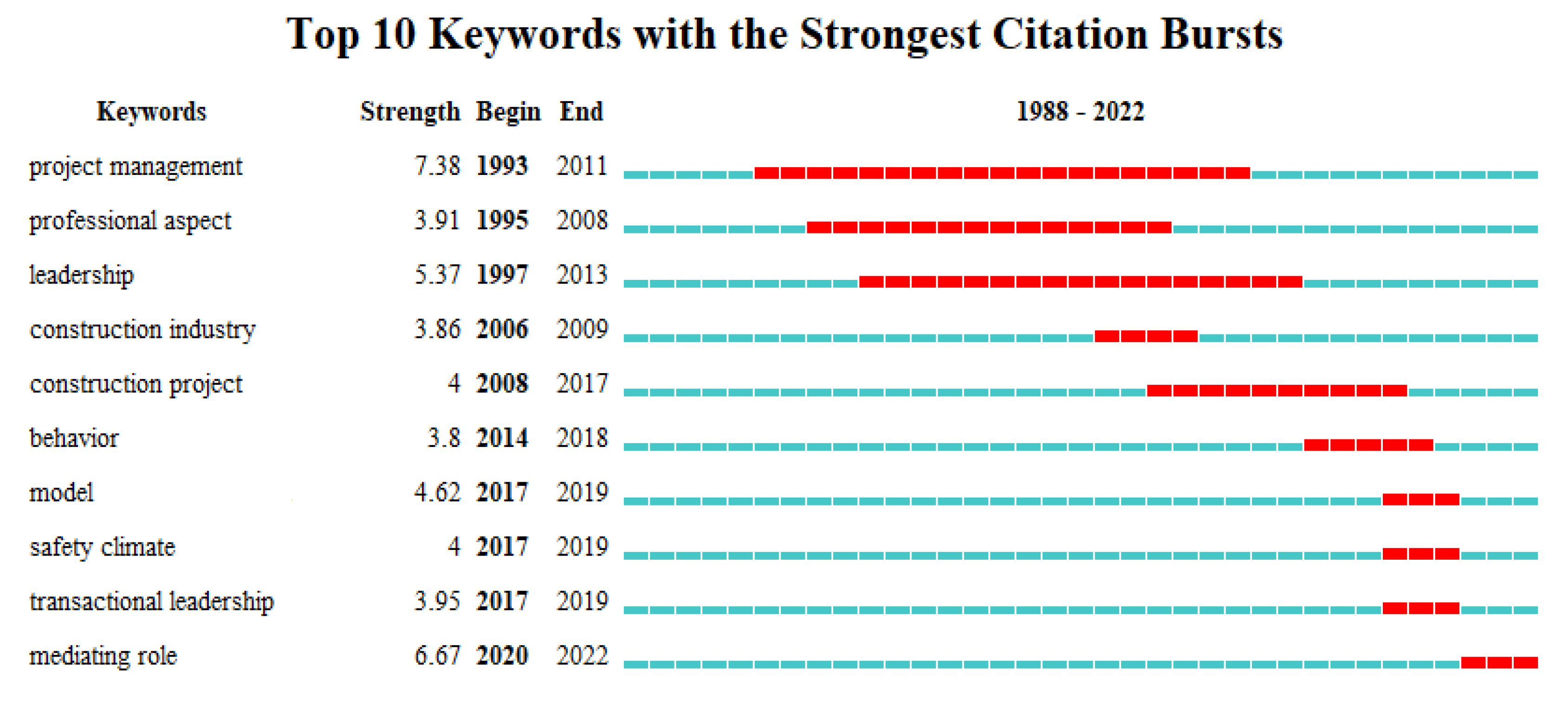
| Country | Publications | Centrality | Country | Publications | Centrality |
|---|---|---|---|---|---|
| US | 418 | 0.21 | Pakistan | 82 | 0.03 |
| UK | 240 | 0.18 | Canada | 73 | 0.07 |
| China | 210 | 0.09 | Germany | 59 | 0.04 |
| Australia | 189 | 0.25 | Indonesia | 57 | 0.01 |
| Malaysia | 90 | 0.07 | Netherland | 51 | 0.04 |
| Institution | Publications | Centrality | Country/Region |
|---|---|---|---|
| RMIT University | 25 | 0.06 | Australia |
| University of Johannesburg | 24 | 0.01 | South Africa |
| Tongji University | 21 | 0.05 | China |
| Curtin University | 20 | 0.08 | Australia |
| Tsinghua University | 20 | 0.03 | China |
| The Hong Kong Polytechnic University | 18 | 0.04 | Hong Kong |
| Queensland University of Technology | 18 | 0.04 | Australia |
| City University of Hong Kong | 17 | 0.05 | Hong Kong |
| Chongqing University | 17 | 0.04 | China |
| National University of Singapore | 15 | 0.05 | Singapore |
| University of Science Malaysia | 15 | 0.02 | Malaysia |
| The University of Hong Kong | 15 | 0.02 | Hong Kong |
| Arizona State University | 10 | 0.02 | US |
| Tianjin University | 14 | 0.03 | China |
| Ariel University | 13 | 0.00 | Israel |
| Deakin University | 13 | 0.04 | Australia |
| University of Florida | 12 | 0.04 | US |
| University of Colorado | 8 | 0.02 | US |
| University of Wolverhampton | 11 | 0.00 | UK |
| The University of Auckland | 9 | 0.01 | Australia |
| Author | Publications | Centrality | Author | Publications | Centrality |
|---|---|---|---|---|---|
| Shamas-ur-Rehman Toor | 11 | 0 | Ralf Müller | 9 | 0.01 |
| Lianying Zhang | 11 | 0.02 | Sadaf Iqbal | 9 | 0.02 |
| Ying Chen | 10 | 0 | Junwei Zheng | 8 | 0 |
| Umer Zaman | 10 | 0 | George Ofori | 8 | 0 |
| Yanfei Wang | 9 | 0.02 | Li H | 8 | 0.02 |
| Top 10 Authors in Co-Citation Frequency | Top 10 Authors in Burst Strength | Top 10 Authors in Centrality |
|---|---|---|
| Bernard M. Bass (541) | Jane M. Howell (14.62) | Robert J. House (0.17) |
| Bruce Avolio (363) | D.A. Aga (13.84) | Bernard M. Bass (0.1) |
| Philip M Podsakoff (308) | Jörg Henseler (13.79) | Alan Bryman (0.09) |
| Gary Yukl (283) | Fred E.Fiedler (12.51) | Bruce Avolio (0.07) |
| Joseph F. Hair (235) | Robert J. House (11.77) | James McGregor Burns (0.07) |
| Robert J. House (211) | Robert R. Blake (11.56) | Michael Fullan (0.07) |
| Timothy A. Judge (190) | Jay A. Conger (11.31) | Philip M Podsakoff (0.07) |
| James McGregor Burns (185) | Lianying Zhang (10.72) | Robert R. Blake (0.06) |
| Albert Bandura (178) | Daniel Katz (10.22) | Mats Alvesson (0.06) |
| Claes Fornell (162) | James R.Meindl (9.94) | Paul Hersey (0.06) |
| Top 10 Keywords in Co-Occurrence Frequency | Top 10 Keywords in Burst Strength | Top 10 Keywords in Centrality |
|---|---|---|
| Leadership (83) | Project management (7.38) | Construction (0.36) |
| Transformational leadership (73) | Mediating role (6.67) | Leadership (0.34) |
| Construction (66) | Leadership (5.37) | Construction industry (0.34) |
| Construction industry (65) | Model (4.62) | Behaviour (0.18) |
| Performance (63) | Construction project (4) | Construction project (0.13) |
| Behaviour (38) | Safety climate (4) | Transformational leadership (0.11) |
| Management (38) | Transactional leadership (3.95) | Management (0.1) |
| Project management (38) | Professional aspect (3.91) | Performance (0.09) |
| Model (30) | Construction industry (3.86) | Project management (0.08) |
| Mediating role (26) | Behaviour (3.8) | Model (0.05) |
Publisher’s Note: MDPI stays neutral with regard to jurisdictional claims in published maps and institutional affiliations. |
© 2022 by the authors. Licensee MDPI, Basel, Switzerland. This article is an open access article distributed under the terms and conditions of the Creative Commons Attribution (CC BY) license (https://creativecommons.org/licenses/by/4.0/).
Share and Cite
Peng, W.; Haron, N.A.; Alias, A.H.; Law, T.H. Leadership in Construction: A Scientometric Review. Buildings 2022, 12, 1825. https://doi.org/10.3390/buildings12111825
Peng W, Haron NA, Alias AH, Law TH. Leadership in Construction: A Scientometric Review. Buildings. 2022; 12(11):1825. https://doi.org/10.3390/buildings12111825
Chicago/Turabian StylePeng, Wang, Nuzul Azam Haron, Aidi Hizami Alias, and Teik Hua Law. 2022. "Leadership in Construction: A Scientometric Review" Buildings 12, no. 11: 1825. https://doi.org/10.3390/buildings12111825
APA StylePeng, W., Haron, N. A., Alias, A. H., & Law, T. H. (2022). Leadership in Construction: A Scientometric Review. Buildings, 12(11), 1825. https://doi.org/10.3390/buildings12111825














